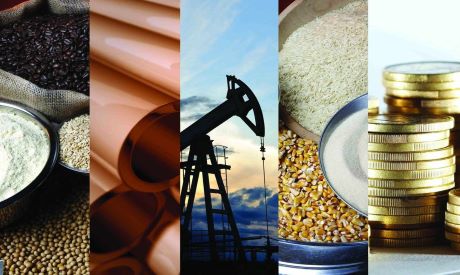To read the full report, please download the PDF above.
Gold is displaying its merits as a tail risk hedge (Middle East tensions) and wealth hedge (central bank purchases)
EHSAN KHOMAN
Head of Commodities, ESG and
Emerging Markets Research –
EMEA
DIFC Branch – Dubai
T:+971 (4)387 5033
E: ehsan.khoman@ae.mufg.jp
RAMYA RS
Analyst
DIFC Branch – Dubai
T:+971 (4)387 5031
E: ramya.rs@ae.mufg.jp
MUFG Bank, Ltd.
A member of MUFG, a global financial group
Global commodities
Gold has displayed the most significant reaction to the war between Israel and Hamas, with prices rising ~5% over the past five weeks (and briefly rising above USD2,000/oz last month). However, markets are implying a smaller upside risk for gold prices this time around than during the initial stages of the war in Ukraine. The velocity at which this geopolitical risk premium has been priced in reflects a market that was short entering the conflict, weighed by higher real rates (as a non-yielding asset, gold faces pressure when real yields rise). Yet, this short covering effect has largely played itself out with the conflict not seen as becoming a regional conflagration. Though, in a decidedly complex market, central bank proclivities always matter for the safe haven and China’s PBoC buying appetite remains even with recent policy constraints (Thai authorities also recently issued a vote of confidence to shield its USD210bn in FX reserves from market turbulence). In this context, gold is displaying its merits currently as a tail risk hedge (Middle East tensions) and wealth hedge (China buying). On net, we would view further sell-offs in gold as a potential buying opportunity given the plethora of elevated global risk dimensions.
Energy
Oil prices have retraced some lost ground in recent trading sessions though conflicting perspectives on fundamentals may block any material upside. The IEA’s latest assessment signalled that global oil markets will not be as tight as expected which came after an unusually elongated assessment from OPEC that it believes data confirms robust demand growth. Meanwhile, the restart of Israel’s Tamar gas field (set to reach pre-war levels next week) is keeping European natural gas (TTF) prices in-check.
Base metals
China’s Wooray Metals Group – one of the largest traders of copper – signalled that the global copper market will face a glut in 2024, though suggested that more Chinese stimulus and a depletion of reserves should tighten conditions long-term. On the whole, base metals are retreating as investors weigh demand prospects following tepid trade data from China having been given a boost earlier this month over China’s steps to prop up growth.
Precious metals
Gold is holding onto recent gains after the soft US inflation reading for October strengthened the view that the Fed’s aggressive monetary tightening cycle has ended. With investors appearing to be pricing out the prospect of the Israel-Hamas war spillover over into the wider region, this reinforces our view that the conflict is not likely to cause a sustained gold rally. Bullion has historically comprised a poor track record as a hedge against heightened geopolitical risk that often proves short-lived, with the exception being when oil supply is threatened (see here).
Bulk commodities
Iron ore prices have surged past USD130/MT for the first time since March 2023 on improving demand for steel in China, following reports that authorities are considering a new wave of stimulus to shore up the ailing property sector. Meanwhile, Glencore will buy a majority stake in Teck Resources coal business, ending a months-long saga that transfixed the mining industry and setting the stage for it to exit the coal business itself.
Agriculture
The US Department of Agriculture, in a surprise, estimated the US corn harvest as the largest ever this week, at 15.2bn bushels. The excess supplies should give further momentum to moderating food prices, with the lowest corn costs in nearly three years likely being a welcome development for the industry.
Core indicators
Price performance and forecasts, flows, market positioning, timespreads, futures, inventories, storage and products performance are covered in the report.



